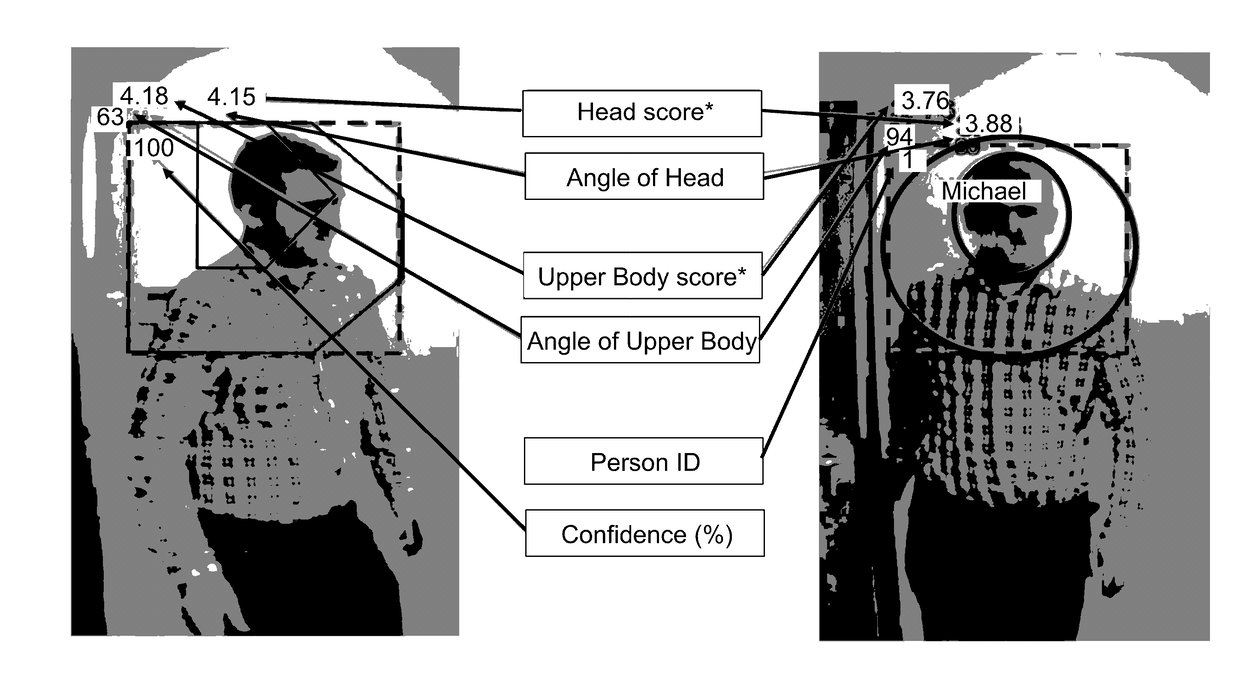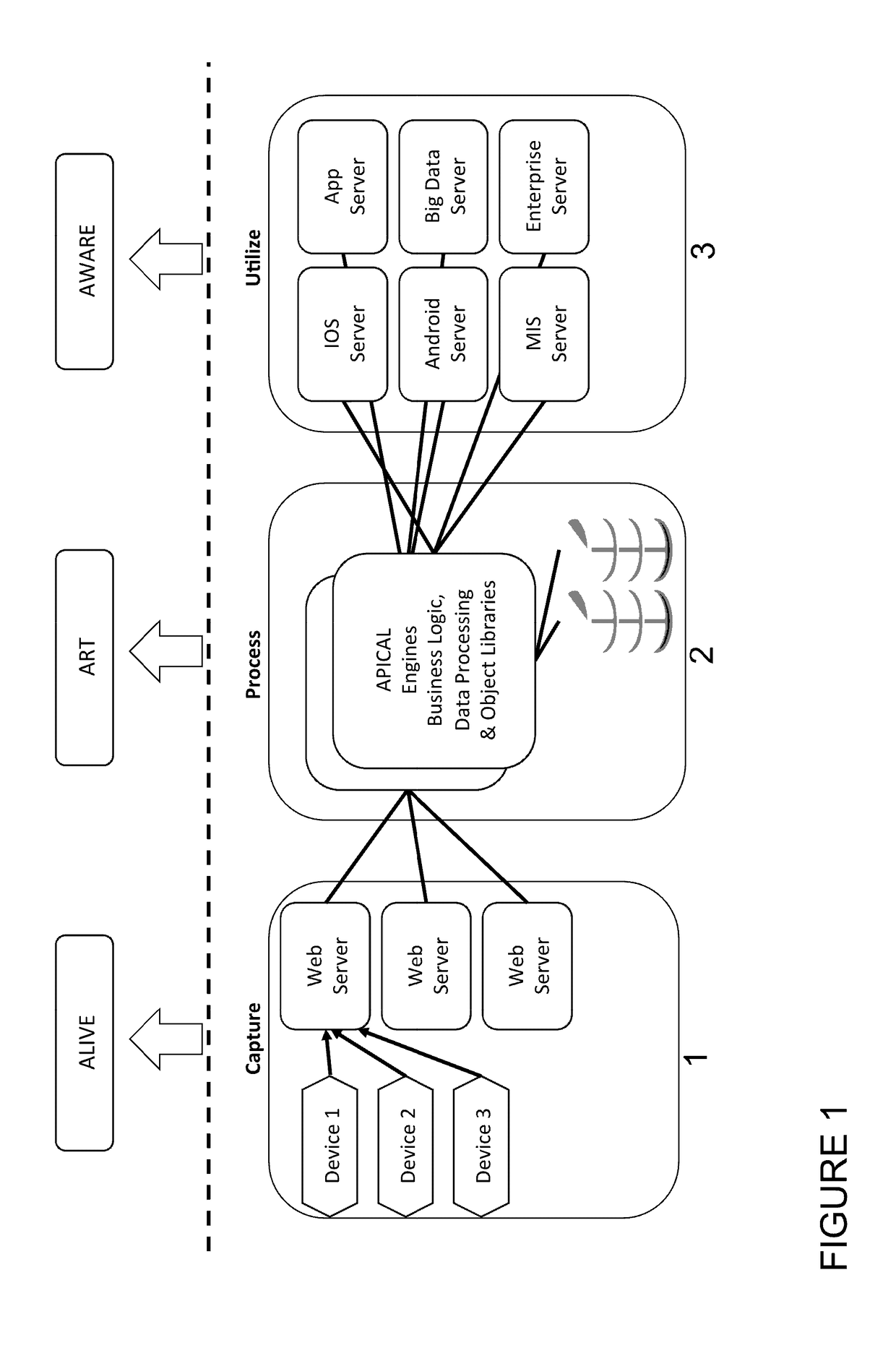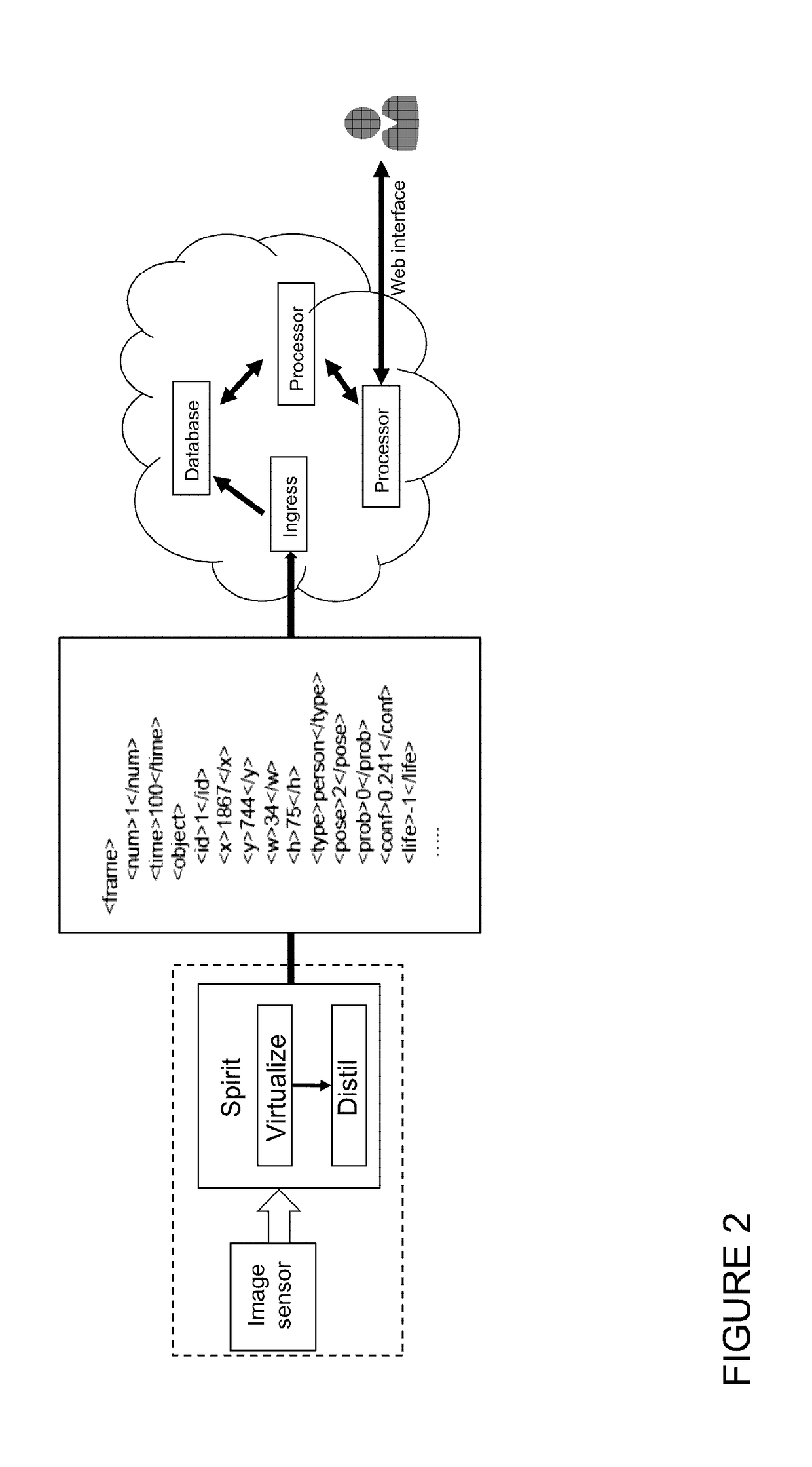Computer vision systems
a computer vision and system technology, applied in the field of computer vision systems, can solve the problems of not real-time and unscalable systems, no possibility of ensuring privacy, and no information on the number of people presen
- Summary
- Abstract
- Description
- Claims
- Application Information
AI Technical Summary
Benefits of technology
Problems solved by technology
Method used
Image
Examples
example use cases
[0332]1. I shoot a video on a Spirit-enabled phone. During capture, (i) my video is automatically framed in a chosen “Director” style, (ii) a set of best stills are captured from the video, (iii) metadata enabling indexing is attached. All is uploaded to the ALIVE server.[0333]2. My friend shoots a video on a non-Spirit phone. (i)-(iii) are done by a Spirit FPGA on upload to the ALIVE server.[0334]3. Some third-party content (e.g. football match) is streamed through a Spirit FPGA to create indexing metadata.[0335]4. Indexer allows me to search my video database for people I care about, and go straight to where they appear.
[0336]Director may post-process my videos to improve their appearance. Editor looks for similar videos from my friends (based on location and time) and locates people of interest within them. It then cuts several videos together automatically by looking for particular poses of individuals (for example, looking at the camera) to create a single montage which is then...
case examples
ART Use Case Examples
[0961]
TABLE 3Security around the home (FIGS. 63-65)Use Case TitleDescriptionSmart door bell: SelfAn important aspect of the invention is that the system is self-learning.learning systemHence ART does not need a calibration at setup. In time, it will be able toidentify normal pathways, and the accurate location of a footpath leadingto an entrance of a door.The system is also able to recognise that people are walking up and downa footpath. The system is able to detect when someone is approaching aparticular home in real time.The system is also able to learn what is unimportant information andlearns to ignore it. For example, the system learns that ambientmovement is unimportant by identifying that movement never comes upto a door. The system also learns that flapping leaves in the backgroundare not important, by identifying it as not being human activity.The engine is also trained around cars and is able to learn that cars aremoving up and down the road.Smart door...
PUM
 Login to View More
Login to View More Abstract
Description
Claims
Application Information
 Login to View More
Login to View More - R&D
- Intellectual Property
- Life Sciences
- Materials
- Tech Scout
- Unparalleled Data Quality
- Higher Quality Content
- 60% Fewer Hallucinations
Browse by: Latest US Patents, China's latest patents, Technical Efficacy Thesaurus, Application Domain, Technology Topic, Popular Technical Reports.
© 2025 PatSnap. All rights reserved.Legal|Privacy policy|Modern Slavery Act Transparency Statement|Sitemap|About US| Contact US: help@patsnap.com



